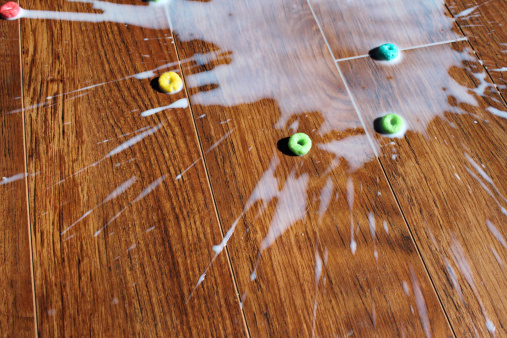There is no denying it.
Having a baby that wakes up several times a night to nurse can be exhausting! You wake up the next day with the dark under-eye circles, the chronic yawning, and the ever-growing question:
Will my baby ever sleep through the night?
(A.K.A. Will I ever sleep through the night?)
Well he will! (And you will too!)
Here are some tips that will help your little one to get the comfort and nutrition he needs during the day so you can get the rest you need at night!
Tip #1: Understand where your child is developmentally.
It is important to know that babies who do not weigh at least 11 pounds will be unable to sleep through the night because they do not have enough mass on their bodies to maintain necessary calories overnight. They need the extra nourishment that comes through nighttime nursing. In addition, babies will show readiness signs for nighttime weaning, such as the ability to sleep for longer periods of time (about 10 hours) without waking.
Tip #2: Gradually decrease the length of nighttime feedings and increase the length between those feedings.
Start to gradually nurse your baby on each breast for a shorter period of time during nighttime feedings. If you fed baby for 10 minutes on each breast, try feeding for 5 minutes on each breast. Also try to increase the length between feedings by replacing some feedings with patting and comforting baby to sleep.
Tip #3: Nurse/Feed more during the day.
Try feeding baby every 2 hours instead of every 3 to make sure he gets more milk during the day. If your baby is old enough, make sure he eats enough solid foods during the day (especially at dinner) so you can be confident that night wakings are occurring more for comfort than for hunger.
Tip #4: Tank up before bedtime.
Nurse baby often in the hours leading up to bedtime. You could try nursing on just one breast during this time to ensure baby gets the higher fat milk that comes at the end of a feeding. Filling up on the higher fat milk will help baby sleep longer between feedings. You can also do what is called a "dream feeding" where you feed baby right before you go to bed, even if baby was already asleep. This way baby won't wake up only 1-2 hours after you go to bed (and you can get more sleep!)
Tip #5: Listen to your baby (and your intuition).
There is no exact science to weaning your nighttime nurser. Every baby is different, but you, as their parent, know them best! You can take these tips and use whatever ones you think will work best for you and your baby. If you try weaning your night time nurser and he cries inconsolably for two or more nights, try again in a couple weeks. Or if he seems to be more anxious or clingy during the day after you start weaning, try it again later. When in doubt, you can always contact us here at Help Me Grow. One of our care coordinators or our child life specialist would be happy to help you with your unique situation.
We hope these tips have been helpful. If you have any other questions, please feel free to comment! We would love to help.
For moms interested in nighttime
bottle weaning, check out
this post.









